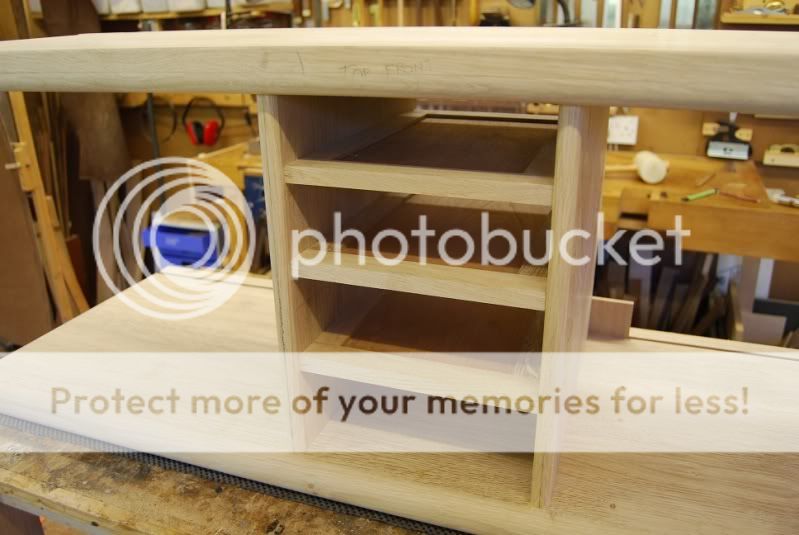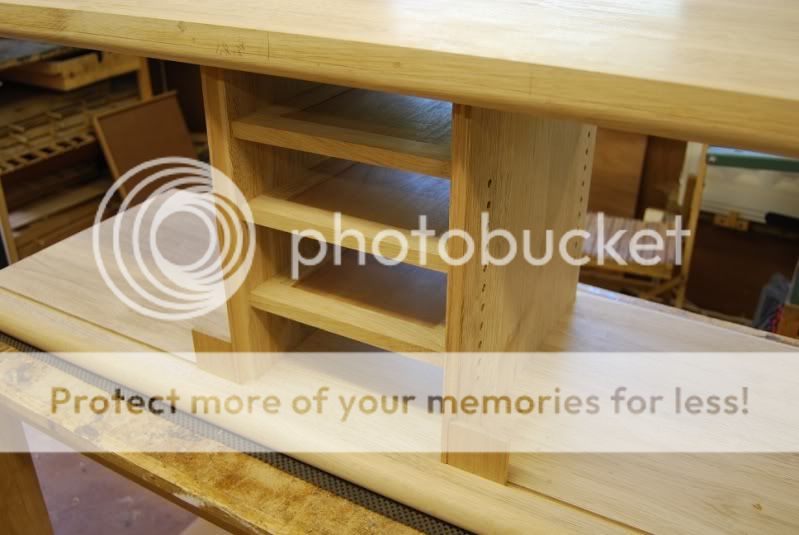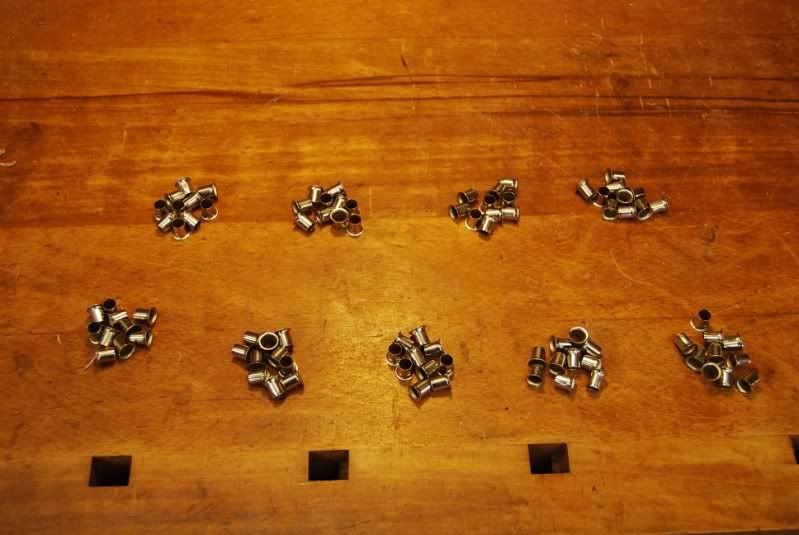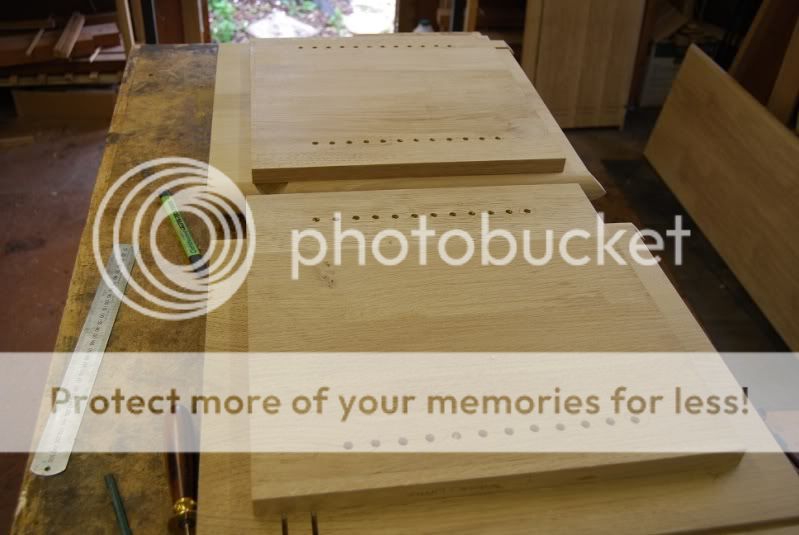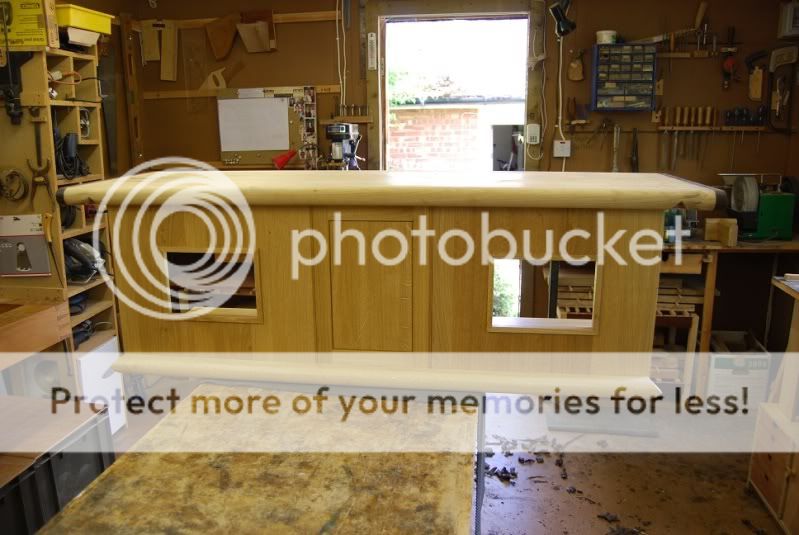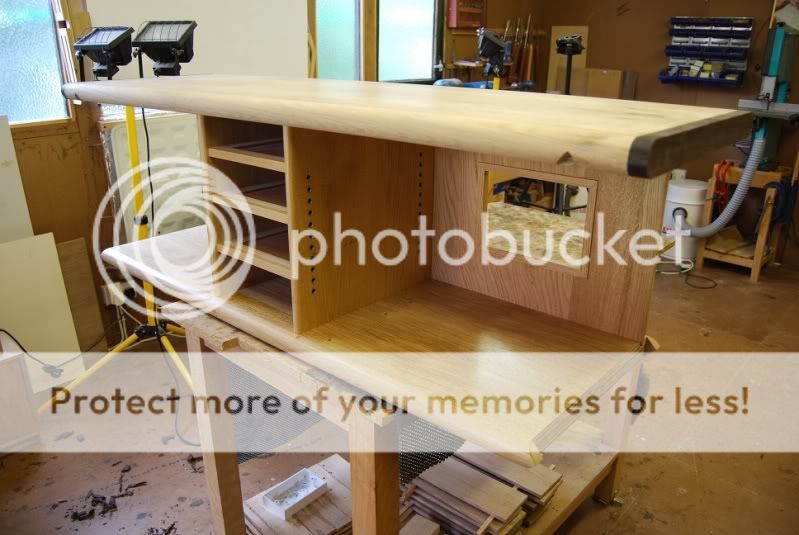This is shaping up really nicely Rob. I love those triangular joints and feel very intimidated by the quality of the fit. Lots of ideas here for a similar project I have planned for next winter in English Oak. A few questions if I may.
Is the use of a vacuum press essential for this type of thick veneering? Would a couple of pieces of 18mm MDF clamped and weighted together be a workable alternative?
What equipment do you use? Costs?
Any threads or sites you can direct us at to learn the techniques?
Presumably the top is laminated to a 24mm ply base? Did you choose to veneer rather than build in solid to reduce timber costs, or to end up with a stable top that will be pretty much immune to shrinkage? Do you veneer both sides for stability or is this unnecessary for this thickness of top?
Sorry for all the questions, but this piece had really got my creative juices working overtime. Many thanks for the WIP piccies. WE LIKE THOSE!





